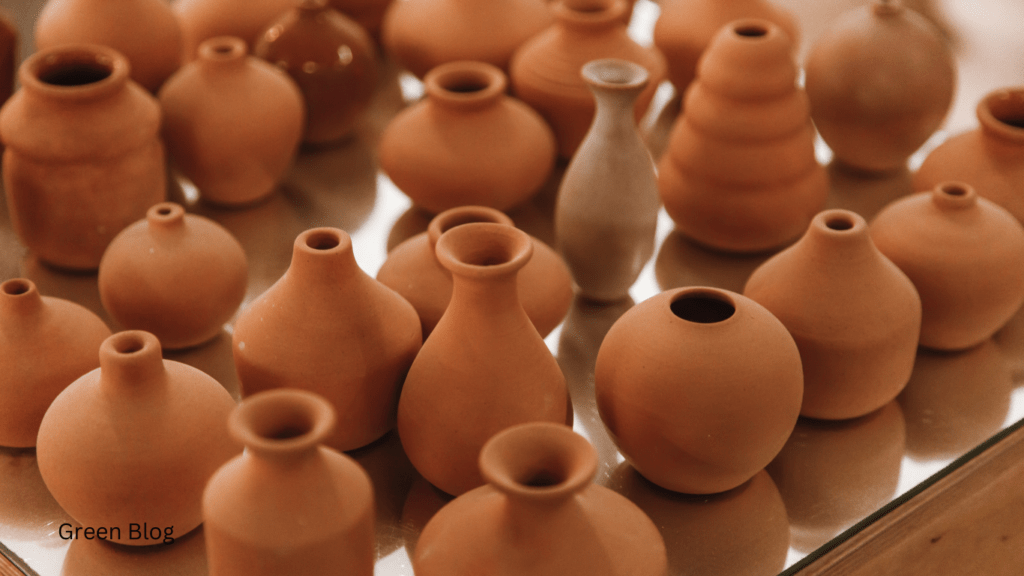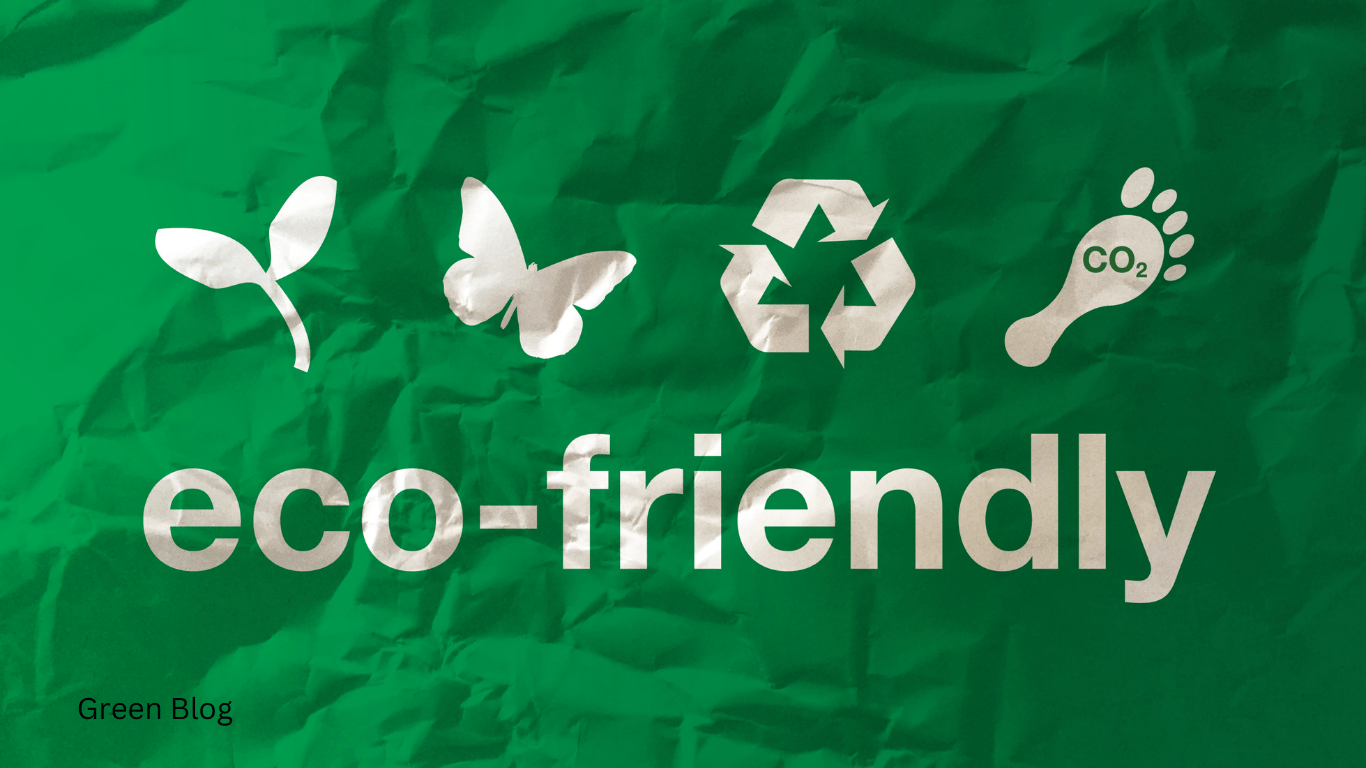Introduction
In today’s world, the urgency to adopt more sustainable practices is more pronounced than ever. Our everyday choices, particularly the products we use in our homes, play a significant role in the health of our planet. Eco-friendly household items are becoming increasingly popular as people recognize the importance of reducing their environmental footprint. These products, made from sustainable materials and designed to be biodegradable or recyclable, offer a myriad of benefits that extend beyond just being kind to the Earth.
Switching to eco-friendly household items involves choosing alternatives that are not only better for the environment but also healthier for our families. From cleaning supplies to kitchenware, the market is now filled with green products that promise to make our homes safer and more sustainable. This shift not only helps in preserving our planet for future generations but also supports ethical manufacturing practices and can even enhance the aesthetics of our living spaces.
In this blog post, we will explore the multifaceted benefits of transitioning to eco-friendly household items. From their positive impact on the environment and health advantages to economic savings and ethical implications, you will discover why making this switch is a smart and responsible choice for every household.
1. Environmental Impact
The environmental impact of our daily choices cannot be overstated. Traditional household items, often made from non-renewable resources and laden with harmful chemicals, contribute significantly to pollution and resource depletion. These products, such as plastic containers, conventional cleaning agents, and disposable paper goods, create a cycle of waste that harms our ecosystems.
Eco-friendly household items, on the other hand, are designed to minimize environmental harm. They are typically made from sustainable materials like bamboo, recycled plastics, and natural fibers. These materials require fewer resources to produce and are often biodegradable or recyclable, reducing the amount of waste that ends up in landfills and oceans. By switching to eco-friendly alternatives, we can significantly reduce our carbon footprint and help combat climate change.
For instance, using reusable shopping bags instead of single-use plastic bags can dramatically cut down on plastic waste. Similarly, opting for biodegradable cleaning products over those with harsh chemicals can prevent toxic substances from contaminating our water supply and soil. These small changes, when adopted on a large scale, can lead to substantial environmental benefits.
Furthermore, the production of eco-friendly items often involves less energy and water consumption compared to traditional products. This not only conserves vital resources but also reduces greenhouse gas emissions associated with manufacturing processes. As consumers, our demand for eco-friendly products can drive industries to adopt greener practices, further amplifying the positive impact on the environment.
By choosing eco-friendly household items, we are not only making a conscious decision to protect our planet but also setting a standard for future generations. It is a proactive step towards ensuring a sustainable future, where natural resources are preserved, and ecosystems are allowed to thrive. The cumulative effect of these individual choices can lead to a healthier, more resilient environment for all.
2. Health Benefits
While the environmental benefits of eco-friendly household items are well-known, their positive impact on personal and family health is equally significant. Traditional household products often contain a myriad of harmful chemicals that can pose serious health risks. From volatile organic compounds (VOCs) in cleaning agents to BPA in plastic containers, these substances can lead to respiratory issues, skin irritation, and even long-term health problems like cancer.

Eco-friendly household items are designed to be non-toxic and chemical-free, offering a safer alternative for everyday use. For example, many green cleaning products use natural ingredients like vinegar, baking soda, and essential oils, which are effective at cleaning without releasing harmful fumes. These natural alternatives not only reduce the risk of allergic reactions and respiratory problems but also create a healthier indoor environment for everyone in the home.
Moreover, eco-friendly products often have minimal processing and fewer additives, making them safer for direct contact with skin and food. Items like bamboo utensils, glass storage containers, and organic cotton linens do not leach harmful substances, ensuring that your food, beverages, and personal spaces remain uncontaminated. This is particularly important for households with children and pets, who are more vulnerable to the adverse effects of toxic chemicals.
Additionally, many eco-friendly products are hypoallergenic and free from artificial fragrances and dyes. This is beneficial for individuals with sensitive skin or allergies, as it reduces exposure to potential irritants. For instance, switching to natural laundry detergents and personal care products can help alleviate conditions like eczema and asthma, promoting overall well-being.
In the long run, using eco-friendly household items contributes to better health outcomes by reducing the cumulative exposure to harmful substances. It fosters a cleaner, safer living environment and supports a lifestyle that prioritizes health and wellness. By making conscious choices about the products we bring into our homes, we can protect our health and that of our loved ones, ensuring a higher quality of life.
Switching to eco-friendly household items is not just an investment in a healthier planet but also in the well-being of our families. It is a step towards creating a home that is free from harmful chemicals, where the air is purer, and the risk of health issues is minimized. The peace of mind that comes with knowing you are making safer, healthier choices for your household is invaluable.
3. Economic Advantages
One of the misconceptions about eco-friendly household items is that they are more expensive than their traditional counterparts. While the initial cost of some green products may be higher, the long-term economic benefits often outweigh the upfront investment. Eco-friendly products are designed for durability and reusability, which means they typically last longer and reduce the need for frequent replacements.
Take, for example, reusable shopping bags or water bottles. While these items may cost more than single-use plastic alternatives, they can be used repeatedly, saving money in the long run. Similarly, investing in quality eco-friendly cleaning products, which often come in concentrated forms or refillable containers, can lead to significant savings over time as they require less product per use and reduce the frequency of purchases.
Another economic advantage of eco-friendly household items is their ability to reduce energy and water consumption. Many green appliances and products are designed to be energy-efficient, which can lead to lower utility bills. For instance, using LED light bulbs instead of incandescent ones can reduce energy consumption by up to 80%, and energy-efficient appliances can save hundreds of dollars annually on electricity costs.
Moreover, eco-friendly household items often have lower maintenance and disposal costs. Products made from sustainable materials tend to be more durable and require less maintenance, leading to fewer repairs and replacements. Additionally, because many eco-friendly products are biodegradable or recyclable, the cost associated with waste disposal is reduced, contributing to overall savings.
Switching to eco-friendly items can also open up opportunities for financial incentives and rebates. Many governments and organizations offer incentives for purchasing energy-efficient appliances, solar panels, and other sustainable products. These incentives can offset the initial cost and make eco-friendly choices more affordable.
Furthermore, adopting eco-friendly practices can lead to a healthier lifestyle, potentially reducing medical expenses related to exposure to harmful chemicals. By creating a safer living environment with non-toxic products, families can lower the risk of health issues and associated healthcare costs.
In conclusion, while the initial cost of eco-friendly household items might be higher, their long-term economic benefits make them a smart investment. They offer savings through durability, reduced energy and water consumption, lower maintenance and disposal costs, and potential financial incentives. By making the switch, households can enjoy economic advantages while contributing to a more sustainable and healthier planet.
4. Supporting Ethical Practices
In addition to their environmental and health benefits, eco-friendly household items also play a significant role in supporting ethical practices within the manufacturing and retail industries. By choosing sustainable products, consumers can contribute to a more just and equitable economy.
Eco-friendly products are often produced by companies that prioritize ethical sourcing and fair labor practices. These companies tend to use materials that are sustainably harvested and ensure that workers are paid fair wages and operate in safe conditions. By supporting these businesses, consumers can help promote humane working conditions and fair trade practices across the globe.
For example, many eco-friendly household items, such as organic cotton linens or fair-trade certified coffee, come from sources that uphold stringent ethical standards. These products often come with certifications that guarantee they were produced without exploiting workers or harming the environment. By purchasing these items, consumers can ensure their money supports ethical business practices.
Moreover, companies that produce eco-friendly products often engage in philanthropic activities, such as donating a portion of their profits to environmental conservation projects or community development programs. Supporting these companies means contributing to broader social and environmental causes, amplifying the positive impact of each purchase.
Switching to eco-friendly household items also encourages transparency and accountability in the supply chain. Many sustainable brands are committed to providing detailed information about their sourcing, manufacturing processes, and environmental impact. This transparency allows consumers to make informed decisions and hold companies accountable for their practices.
In addition, eco-friendly products often come from small businesses and local artisans who focus on sustainability and quality. By purchasing from these sources, consumers can support local economies and promote sustainable craftsmanship. This support helps small businesses thrive and fosters a culture of sustainability within communities.
In conclusion, choosing eco-friendly household items is not just about making environmentally conscious decisions; it’s also about supporting ethical practices within the industry. By prioritizing products that are sustainably sourced, ethically produced, and transparently marketed, consumers can contribute to a more equitable and sustainable global economy. Each purchase of an eco-friendly product is a step towards a fairer, more responsible world, where businesses are encouraged to prioritize the well-being of their workers and the environment.
5. Enhancing Home Aesthetics
Eco-friendly household items are not only beneficial for the environment and our health, but they also add a unique and appealing aesthetic to our homes. Sustainable design has evolved to incorporate stylish and modern elements, making it easy to integrate eco-friendly products into any home decor.
One of the key aspects of eco-friendly design is the use of natural materials. Items made from bamboo, reclaimed wood, and organic fabrics bring a touch of nature into our living spaces. These materials often have a warm, earthy look that can create a calming and inviting atmosphere. For example, bamboo furniture and accessories are not only durable but also add a sleek, contemporary feel to any room.
In addition to their natural beauty, eco-friendly products are often designed with simplicity and minimalism in mind. This design philosophy aligns with the growing trend of minimalistic living, which emphasizes quality over quantity. Eco-friendly items, with their clean lines and functional designs, can help declutter spaces and create a more organized and aesthetically pleasing environment.
Furthermore, many eco-friendly products are handcrafted, which adds a unique, artisanal touch to home decor. Handcrafted items, such as hand-woven rugs, pottery, and textiles, often showcase exceptional craftsmanship and attention to detail. These one-of-a-kind pieces can serve as focal points in a room, adding character and individuality to home interiors.

Eco-friendly lighting solutions also contribute to enhancing home aesthetics. LED bulbs, which are energy-efficient and long-lasting, come in various designs and color temperatures that can create different moods and ambiances. From sleek, modern fixtures to vintage-style bulbs, eco-friendly lighting options can enhance the look and feel of any space while reducing energy consumption.
Additionally, sustainable home decor often incorporates elements of biophilic design, which emphasizes the connection between indoor spaces and nature. This can include the use of indoor plants, natural light, and natural materials to create a harmonious living environment. Biophilic design not only enhances the aesthetic appeal of a home but also promotes well-being by fostering a connection to nature.
In conclusion, eco-friendly household items can significantly enhance the aesthetics of our homes. With their natural materials, minimalist designs, artisanal craftsmanship, and innovative lighting solutions, these products offer a stylish and sustainable way to decorate living spaces. By incorporating eco-friendly items into home decor, we can create beautiful, functional, and environmentally conscious homes that reflect our values and commitment to sustainability.
6. Easy Transition Tips
Switching to eco-friendly household items may seem daunting, but it can be a smooth and rewarding process with the right approach. Here are some practical steps and tips to help you make the transition:
Start Small and Prioritize
Begin by replacing one or two items at a time, prioritizing the most impactful changes first. For instance, start with reusable shopping bags and water bottles, which are easy to incorporate into your daily routine. Gradually, you can move on to more significant changes like switching to eco-friendly cleaning products and sustainable kitchenware.
Do Your Research
Take the time to research eco-friendly alternatives to the household items you use regularly. Look for products that are certified by reputable organizations, such as the Forest Stewardship Council (FSC) for wood products or the Global Organic Textile Standard (GOTS) for textiles. Reading reviews and seeking recommendations can also help you find high-quality, sustainable options.
Buy in Bulk
Purchasing eco-friendly products in bulk can reduce packaging waste and save money in the long run. Items like biodegradable soaps, organic foods, and sustainable cleaning supplies are often available in larger quantities. Buying in bulk also reduces the frequency of shopping trips, further minimizing your environmental footprint.
Embrace Reusability
Opt for products that are designed to be reusable instead of disposable. This includes items like cloth napkins, glass food storage containers, and metal straws. Reusable items not only reduce waste but also tend to be more durable and cost-effective over time.
DIY Solutions
Consider making some eco-friendly household items yourself. For example, you can create your own cleaning solutions using simple ingredients like vinegar, baking soda, and essential oils. DIY projects can be fun, cost-effective, and allow you to control the ingredients and materials used.
Educate Your Household
Involve everyone in your household in the transition to eco-friendly items. Educate them about the benefits and importance of sustainable living. By getting everyone on board, you can ensure that the changes are more effective and long-lasting.
Support Local and Sustainable Brands
Whenever possible, purchase from local and sustainable brands. Supporting small businesses and local artisans not only helps the economy but also reduces the carbon footprint associated with shipping products over long distances. Look for brands that are transparent about their sourcing and manufacturing practices.
Set Realistic Goals
Set achievable goals for your transition to eco-friendly household items. For example, aim to replace one conventional product with an eco-friendly alternative each month. Track your progress and celebrate your achievements to stay motivated.
Recycle and Repurpose
Before disposing of old household items, consider if they can be recycled or repurposed. Many items can be given a new life with a bit of creativity. For example, glass jars can be used for storage, and old t-shirts can be turned into cleaning rags.
Stay Informed
Stay up-to-date with the latest trends and innovations in sustainable living. Follow blogs, join online communities, and participate in workshops to continually learn and improve your eco-friendly habits.
In conclusion, transitioning to eco-friendly household items is a manageable process with the right approach. By starting small, doing your research, embracing reusability, and involving your household, you can make meaningful changes that benefit both your home and the environment. With patience and commitment, the switch to sustainable living can become a natural and rewarding part of your daily life.
Conclusion
Incorporating eco-friendly household items into our daily lives is a meaningful step towards creating a more sustainable and healthier world. The benefits extend beyond reducing environmental impact; they also include significant health advantages, economic savings, and support for ethical practices. Additionally, these products can enhance the aesthetics of our homes, making them not only sustainable but also stylish and functional.
Switching to eco-friendly alternatives may seem like a small change, but collectively, these efforts can lead to substantial positive outcomes. By making conscious choices about the products we use, we contribute to reducing pollution, conserving natural resources, and promoting a healthier living environment. Moreover, supporting ethical brands and sustainable practices helps to create a fairer and more transparent global economy.
The transition to eco-friendly household items doesn’t have to be overwhelming. Starting small, prioritizing impactful changes, and gradually incorporating more sustainable options can make the process manageable and even enjoyable. The tips provided in this guide can help ease the transition, ensuring that each step taken is meaningful and sustainable.
In conclusion, embracing eco-friendly household items is a powerful way to make a positive difference in our lives and the world around us. It’s an investment in a healthier planet, a safer home, and a more sustainable future. By choosing to live sustainably, we set an example for others and pave the way for a greener, more conscious way of living. Make the switch today and experience the myriad benefits of eco-friendly household items for yourself and future generations.
